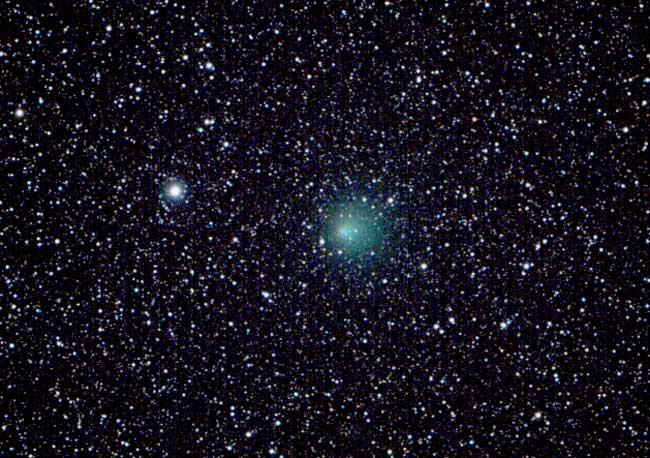Credit & Copyright: Michael Holloway
Explanation:
It's back.
Every 3.3 years,
Comet Encke swoops back into our inner
Solar System.
First officially discovered in 1786, Comet
Encke is on its 59 th documented return,
making it one of the best-studied
comets on the sky.
Mysteriously, Comet Encke should have been discovered millennia earlier,
since it likely became bright enough to see unaided many
times over the past few thousand years.
Comet Encke's elliptical trajectory reaches from outside the orbit of
Mars to inside the orbit of
Mercury.
It passed relatively close to the
Earth on Nov. 17 and will reach its closest to the Sun on Dec 29.
Recent observations place Comet Encke as bright as
visual magnitude six during early December,
making it just on the verge of unaided
human vision.
Pictured above, the diffuse smudge of periodic
Comet Encke was imaged through a small telescope on November 29 from
Arkansas,
USA.
1999 2000 2001 2002 2003 2004 2005 2006 2007 2008 2009 2010 2011 2012 2013 2014 2015 2016 2017 2018 2019 2020 2021 2022 2023 2024 2025 |
Yanvar' Fevral' Mart Aprel' Mai Iyun' Iyul' Avgust Sentyabr' Oktyabr' Noyabr' Dekabr' |
NASA Web Site Statements, Warnings, and Disclaimers
NASA Official: Jay Norris. Specific rights apply.
A service of: LHEA at NASA / GSFC
& Michigan Tech. U.
|
Publikacii s klyuchevymi slovami:
comet Encke - komety - kometa Enke
Publikacii so slovami: comet Encke - komety - kometa Enke | |
Sm. takzhe:
Vse publikacii na tu zhe temu >> | |
